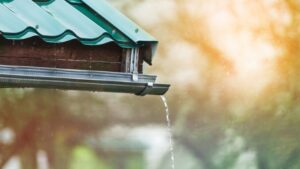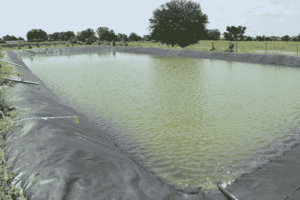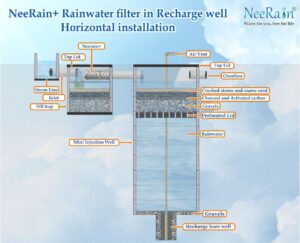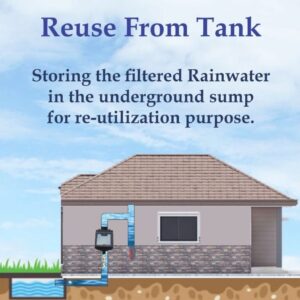With the human population facing major water scarcity and reports suggesting that more than half the world’s population will be living in water-stressed regions by 2050 (Water Aid), there is an urgent need for a system that helps the human race get access to fresh water. The solution to this problem is rainwater harvesting. It is the most sustainable way of accessing fresh water and does not require any energy for functioning. It does not deplete any natural resources, on the contrary, helps conserve and protect the natural habitat. This read is all about understanding the steps of rainwater harvesting and understanding how there is a need for rainwater harvesting.

Types of rainwater harvesting:
The types of rainwater harvesting will help us understand the system better. It is best to learn about them so we know which one works best for us and accordingly learn about the steps of rainwater harvesting.
1) Surface rainwater harvesting
2) Rooftop Rain Water
1) Surface rainwater harvesting
In urban areas, rainwater flows away as surface runoff. This runoff can be caught and used for recharging aquifers by adopting appropriate methods.


2) Roof Top Rain Water Harvesting
Rooftop Rain Water Harvesting is the technique through which rainwater is captured from the roof catchments and stored in reservoirs. Harvested rainwater can be stored in sub-surface ground water reservoir by adopting artificial recharge techniques to meet the household needs through storage in tanks.
The Main Objective of rooftop rainwater harvesting is to make water available for future use. Capturing and storing rainwater for use is particularly important in dryland, hilly, urban and coastal areas. In alluvial areas energy saving for 1mt rise in groundwater level is around 0.40 kilo watt per hour.
Need for Rooftop Rain Water Harvesting
- To meet the ever-increasing demand for water
- To reduce the runoff which chokes storm drains
- To avoid flooding of roads
- To augment the groundwater storage and control decline of water levels
- To reduce groundwater pollution
- To improve the quality of groundwater
- To reduce soil erosion
- To supplement domestic water requirement during summer, drought etc.
Advantages of Rain Water Harvesting
- Provides self-sufficiency to your water supply
- Reduces the cost for pumping of groundwater
- Provides high-quality water, soft and low in minerals
- Improves the quality of groundwater through dilution when recharged to groundwater
- Reduces soil erosion in urban areas
- The rooftop rainwater harvesting is less expensive
- Rainwater harvesting systems are simple which can be adopted by individuals
- Rooftop rain water harvesting systems are easy to construct, operate and maintain
- In hilly terrains, rooftop rainwater harvesting is preferred
- In saline or coastal areas, rainwater provides good quality water and when recharged to groundwater, it reduces salinity and also helps in maintaining balance between the fresh-saline water interface
- In Islands, due to limited extent of freshwater aquifers, rainwater harvesting is the most preferred source of water for domestic use
- In deserts, where rainfall is low, rainwater harvesting has been providing relief to people
Safety Consideration
1) Storage in Ground Water Reservoir
a) For rooftop rainwater harvesting through existing tubewells and handpumps, filter or desilting pit should be provided so that the wells are not silted.
b) Such tubewells if pumped intermittently, increase the efficiency of recharge.
c) If the groundwater reservoir is recharged through, shaft, dug well etc., inverted filter may be provided.
 2) Storage in Tanks
2) Storage in Tanks
a) A storage tank should not be located close to a source of contamination, such as a septic tank etc.
b) A storage tank must be located on a lower level than the roof to ensure that it fills completely.
c) A rainwater system must include installation of an overflow pipe which empties into a non-flooding area. Excess water may also be used for recharging the aquifer through dug well or abandoned handpump or tubewell etc.
d) A speed breaker plate must be provided below inlet pipe in the filter so as not to disturb the filtering material.
e) Storage tanks should be accessible for cleaning.
f) The inlet into the Storage tank should be screened in such way that these can be cleaned regularly.
g) Water may be disinfected regularly before using for drinking purpose by chlorination, treating with UV light or boiling etc.

How Much You Can Collect and Collection Efficiency
How efficiently the rainfall can be collected depends on several considerations. Collection efficiencies of 90% are often used depending on the specific design.
Rainfall Reliability.
The first step is to determine how much water would be generated from your roof area. Average monsoon rainfall is used for this purpose.
Formula:
Total quantity of water to be collected (cu.m.) = Roof Top Area (Sq.m.) x Average Monsoon Rainfall (m) x 0.9
For Example:
Area of your roof is 150 Sq.mtr and average rainfall is 782 so rainwater that would be generated from your roof will be :
150 (Sq. mtr) X 782 (mm) X 0.9 (Co- efficient)
Every year 1,06,000 Liters will be filtered and harvested in your resource.
Neerain rooftop rainwater filter has won CII’s national Award for Excellence in water management 2022 for the innovative water saving product category on 29 Sep 2022.
NeeRain is featured on Doordarshan DD India, DD News and DD Girnar for common man centric work. NeeRain is inducted on board by Ministry of Housing and Urban Development (GOI) under Amrut 2.0 water innovation initiative.
